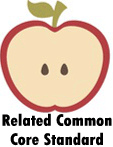Character and Setting Worksheets To Print:
Apples to Apples Comprehension - A juicy story about apples. How many types of apples does the tale tell you about?
Feeling Blue - Jack isn't having a great deal. We first start to look at emotions. Based on the passage above, what do you think blue means?
Cat and Dog Recall - Pull key facts from the reading passage. This can be a listening activity as well.
Draw and Color: Above, Below and On - This is a following directions activity. See how they do. It all works off a scene about a boat on the water.
Farmer John Comprehension - Oh those pigs! Always playing and making a mess. Draw a picture that shows what the pigs like to do in the mud.
Foxy Forest - This is a long comprehension sheet. It is intended to be read to students. Describe how Mrs. Fox might have been feeling as she listened to Mr. Fox and the coyotes in the forest.
Jill Just Got How From School - Hopefully this is how most children are coming home these days.
Making a Sandwich - Let's see if you can tell us how you can make a sandwich and the steps included.
Mama Bird - At first this will look like a comprehension sheet, but it is more of a vocabulary sheet. Suzie was worried about the baby bird. Which word can be replaced with worry?
Mary Stands Up Comprehension - The worksheet asks you to get a general feel for the tale. Draw a picture of the main character in this adventure. Explain why that person is the main character.
Night Time Listen and Do - Draw a picture of what is going on in the story. Listen to the tale and then draw a picture of what you heard.
On a Farm - What can you remember? - Which items were mentioned in the story? Circle all the pictures that represent something from what you have read.
Our Feelings - Fill in the missing word below using the reading passage and picture clues to help you.
Rhyming Words - We work through basic words that will be found in all the stories of this section.
Sam's Lunch - Completing the sentences based on a reading passage. Using words from the Word Bank, fill in the missing word of each sentence.
Twins: Same and Different - A good time to introduce the concept of fraternal twins. Read the story and then use the words in the box and the picture to write your answers.
Get FREE English Worksheets In Your Email

